Why Costa Rica is the eco-friendly destination to know about
In August 2020, in the middle of lockdown, Costa Rica announced its 30th national park. The former prison island of San Lucas, off Puntarenas on the Pacific coast, is a haven for howler monkeys, bats, spiders, snakes, deer, pheasants, hammerhead sharks, manta rays and sea turtles, and now will also be one for hikers and history buffs eager to learn about the Alcatraz of Central America.

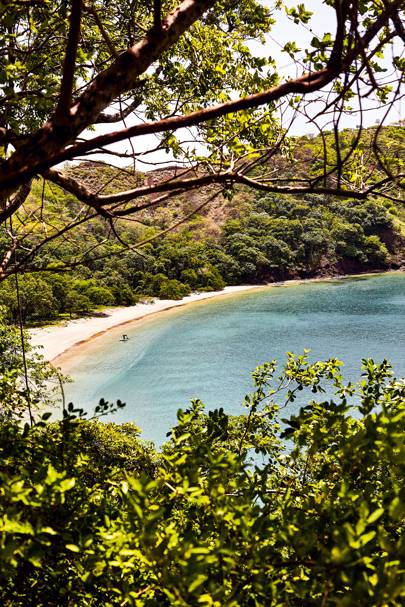
Beach at Kasiiya Papagayo hotel in Papagayo
Oliver Pilcher
This news was a powerful reminder that the planet remains a chief priority, above and beyond the pandemic, and of the country’s single-minded pledge to protect its environment – for its own sake and to mitigate climate change. Ecotourism has played a lead role, helping to fund the preservation of the ethereal cloud forests of Monteverde and the remote jungles of the Osa Peninsula, as well as popular destinations such as the Tortuguero and Manuel Antonio national parks. And while nations around the world have taken an approach similar to that of Costa Rica, perhaps nowhere else do citizens play as important a part as authorities. Conservation, here, is a national cause.
Advertisement

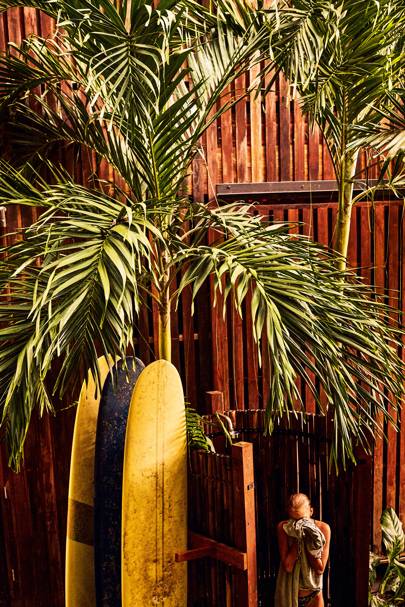
Shower at Hermosa Treehouse in Santa Teresa
Oliver Pilcher
Just 140 miles from the capital San José, and a motorboat hop from San Lucas, is the Nicoya Peninsula, where, over the past two decades, locals and an international nomadic crowd have created a community of earth-loving forward thinkers. Their home, a verdant limb in the north-west, has a string of beautiful beaches and handful of townships where pura vida – the mantra for living a simple life – is second nature. From Tamarindo, or Tama, down to Santa Teresa and Malpais are villas and small hotels, surf shacks and schools, artist and craft studios, restaurants championing regional food and beachside bars where DJs mix salsa, soca and calypso.
Read next
All this is also only ever a step away from full-blown wilderness, and that informs the way everything is done. Here are five of the movers, shakers, thinkers and makers on the scene...

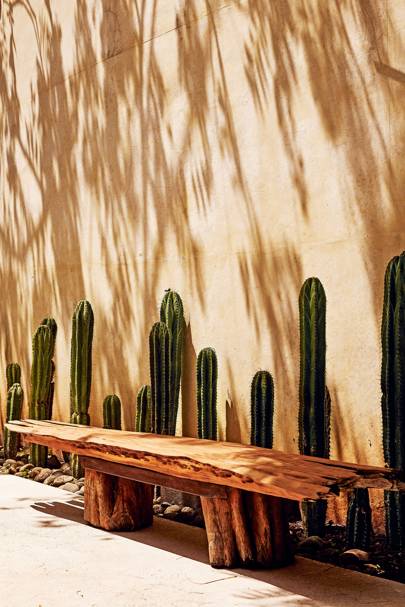
Garden of artist Gabriela Valenzuela-Hirsch in Playa Langosta
Oliver Pilcher
Advertisement
GABRIELA VALENZUELA-HIRSCH
An artist and designer whose work has been showcased in London’s Design Museum and the Smithsonian Cooper-Hewitt Museum in New York
‘I’m a Tica (Costa Rican), born in San José to a family of creators. I came back here in 1996 as part of a kind of prenup. Before we married, my husband Jerry made me commit to a plan that would allow him to retire young so we could escape to a special place to surf for the rest of our lives. His fashion business in New York, Go Silk, was booming. He had dressed Mick Jagger, Michael Jackson, Glenn Close. But when he turned 40, we sold everything and went to seek the perfect surf break. We bought a piece of land right on the beach, steps from the water.
‘Tamarindo was pretty raw – dusty roads, with no phone lines and barely any infrastructure. It was challenging, especially as my daughter was still a baby. We quickly established the basics with other expats: a grocery store, school and pharmacy. We were living in the core of a Blue Zone, with non-GMO blue corn, where the drinking water from the tap is pure, with a pH of more than seven. When we went back to the Hamptons during summer holidays, I realised we were achieving a sense of wellbeing in Costa Rica that people in the urban rat race could only dream of.
Read next

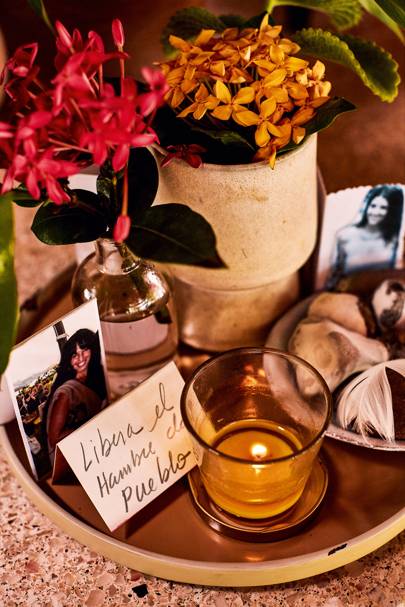
Interior details at Gabriela’s house
Oliver Pilcher
Advertisement
‘I founded Heartwood Design – a cooperative of artisans to assist men and women with limited resources to turn their traditional folk art into high-end products. These are sold around the world, providing a source of income and pride for the craftspeople. I love the creative process, too, carving intricate, three-dimensional sculptures. Wood is one of my favourite mediums. I play with tones, where the grains unfold like a tale, inspiring curves and fresh fish and authentic projections. I’m humbled every day to wake up in paradise. I do my chanting and sun salutations, then go to my studio and work there all day long. I consider myself an eco-modernist artist, as I only use uprooted and fallen trees in my pieces, and I’ve been involved in reforestation programmes here since the mid-1990s. Nature is paramount for all of us. My work is to protect and defend it.
‘Other countries and cities talk about embracing doughnut economics (pinpointing the sufficiency of resources we need to lead a good, sustainable life). Well, we’re already doing that; Tamarindo is the first community in Latin American to be fully regenerative. This is transformative for the planet.’

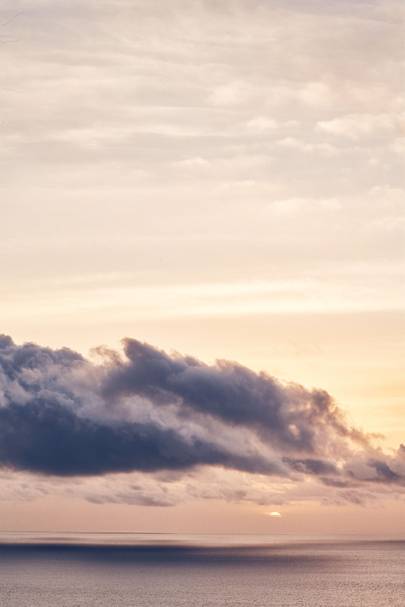
Sunset view from the clifftop restaurant at Kasiiya Papagayo
Oliver Pilcher
ESTEBAN OREAMUNO
Read next
‘When I moved to Santa Teresa, in 2001, nobody in San José knew what it was like or even where it was. Access was difficult, and it was a seven- to eight-hour drive from the capital. There were three little hotels at that time: Frank’s Place, Trópico Latino and Milarepa. A few Ticos came to hang out on the six miles of deserted white sand. Then Nicoya pioneer Susan Money opened Florblanca, and it put the town on the map.
‘In 2017, I heard about this new eco beach retreat, Kasiiya Papagayo, that was being planned, and I was blown away. The setting was extremely wild, with lots of birds and animals including monkeys, coatis, anteaters and sometimes a puma; two private beaches; a rare and very special dry tropical forest; the best snorkelling in Costa Rica – you see whales, turtles and sting-rays up close – and a sublime sunset. You can scuba dive, hike on the Pacific View Trail, take off on drives up the winding roads.

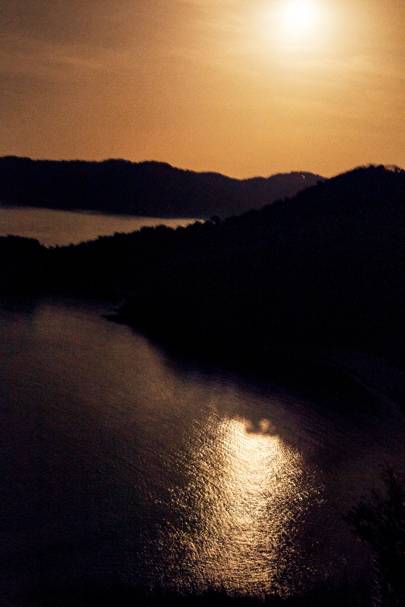
Papagayo peninsula
Oliver Pilcher
‘The owner Mehdi Rheljari’s idea was to leave the land 100 per cent untouched. The architects, AW2 from France, did an amazing job avoiding any impact on the scenery and keeping the infrastructure low scale. There’s no concrete, the majority of the materials used for construction being recycled wood and fallen trees, and there are just seven tented suites, camouflaged in 136 acres of wilderness. They’re cooled by coastal breezes. I love the upscale tent concept and the fact that it is totally off grid. All the bath products are locally made and 100-per-cent organic. Most of the food is sourced from the province of Guanacaste. There’s a naturalist guide who is a brilliant teacher on the dry forest’s flora and fauna and the marine life of Punta Gorda. And there’s a resident healer, Yamuna, who trained in India and is an expert in chakra cleansing. He practices at the spa, which is hidden in the jungle and reached by a hanging bridge.
‘When Covid-19 hit, the property was only two years old. With no guests, we focused on our neighbours. People had little work and a lot of time on their hands. So we made a deal with them: we gave them materials, and they gave their time to help improve the town. They did really wonderful work, painting the school and bus stops with murals and fixing up the church roof. They felt useful again, and so did we. We donated masks and food, too, and it connected us even more to nearby Nuevo Colón, where many of the staff have their homes.’
Read next


Playa Negra
Oliver Pilcher
GRIET DEPYPERE
Originally from Belgium, Griet co-owns Cala Luna hotel in Tamarindo with her sister, Els Depypere, and former brother-in-law, Antonio Pilurzu
‘I came to Tamarindo in 1992 with Els and Antonio. We fell in love with this quiet, nature-rich, peace-loving country, with no army, and good medical and educational systems. We started to build Cala Luna two years later.

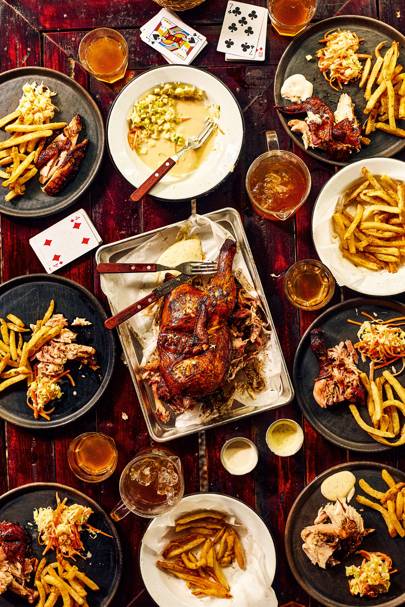
Smoked chicken at rental Casa Corazón in Playa Negra
Oliver Pilcher
‘I’m from a family with culinary passions, and 15 years of living in Italy and lots of travel has made me a foodie for life. Working with the young Costa Rican agroecologist Carlos Piñeda Soto and our chefs, we’ve come up with tasting menus that make local produce the star of the show. We mostly use what can be grown here. To the classic base of all Costa Rican feasts – peppers, coriander, onion and garlic – we’ve added culantro, chay, wild anise, uvita, caroa, tamarind leaves, madero negro flowers and beach asparagus. And we’ve been inspired by traditional goods: sorghum, root vegetables, pigeon peas and blue and purple corn. There’s also a seven-acre organic vegetable garden, beehives and medicinal herb garden. All this helps to keep our carbon footprint small. We’ve massively reduced waste, too, with no plastics, and try to use every part of our ingredients, fermenting pineapple peel to create our own vinegar, and making a vegetarian version of a regional dish called carne mechada from plantain peel.
Read next
‘To get away from the heavily commercialised species, we work closely with local fishermen – so you won’t find tuna or lobster on our menu. Instead we choose meaty congrio, buttery Pacific mackerel and zingy spotted grouper. We source mussels and other shellfish from Palito on Chira Island, through a women-led collective supported by the University of Costa Rica. Believe it or not, none of those fish can be found on the commercial market.
‘Carlos, who’s from Santa Cruz, is one of a new generation of organic agronomists emerging in the country. He came on board three years ago, in the month before he graduated from his training. He’s amazing, fully responsible for the success of our kitchen garden. Through him we’ve become actively involved in community groups. It’s been vitally important during the Covid-19 crisis.’

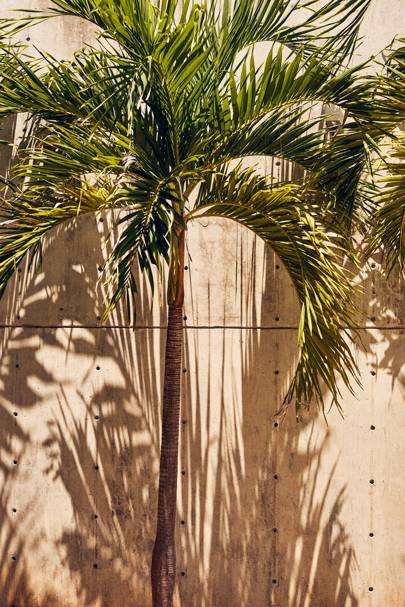
Palm tree against concrete at La Senda wellness centre in Tamarindo
Oliver Pilcher
JUAN DIEGO EVANGELISTA
A surfer and surfboard shaper from Argentina; at Cheboards, his studio in Tamarindo, he has pioneered building toxic-free balsa-wood boards
‘I was born in Mar del Plata. It’s a beautiful city on the ocean with a small scene of its own. I surfed every summer, but during the winters the South Atlantic gets cold, and I soon learned to head to other places to find waves. When I was 25, I came to Costa Rica for the first time and met my wife Mareike. After more travelling, we settled in Tamarindo in 2012.
Read next
‘It’s almost always sunny here, and the sea is warm. I thought, this is a cool place to live. There are as many kinds of breaks as there are hotels or restaurants. We have two boys, aged four and six, and all of us surf. It’s a paradise for families. We are right in the middle of nature, and the little ones learn to enjoy the simple things of life. And if you’re a serious surfer, you can hit the Caribbean and the Pacific on the same day.
‘I’ve always loved to work with my hands. As a kid I played with Lego and made the figures little wooden boards so they could surf. This grew into my passion and craft, and today I make surfboards to spread the fun to others. I use 90-per-cent organic materials and specialise in Costa Rican balsa. It’s a light wood with unique qualities: it floats easily and is flexible, both things wave riders like. It grows locally, so we save money and carbon emissions.
‘The surf here is for everyone. Our circle is very diverse. There are people of all ages, toddlers to 80 year olds, from all nationalities and backgrounds. You see paddleboards, foils, longboards and shortboards in the water. We organise competitions; the big summer event is the Tamarindo International Surf Film Festival. Off the town’s coast, the clear sea and good barrels are irresistible. Getting barrelled is the ultimate goal of every surfer. It’s like getting lost in time. When the weather’s sunny and the water’s clean, it’s heaven.’

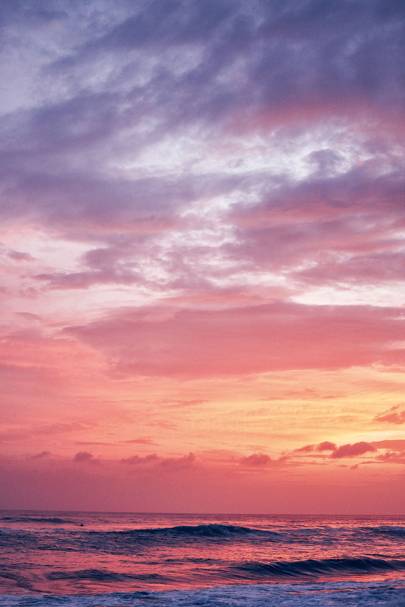
Sunset in Santa Teresa
Oliver Pilcher
BERNAL DIAZ
Read next
A Costa Rican biologist and farmer, has worked as a naturalist and expedition leader for National Geographic expeditions and the World Wildlife Fund for 20 years
‘People often wonder why this country has become a global biodiversity hotspot. It has something to do with us being isolated from the colonial administration for centuries. We became self-sufficient and never had much time for military leaders or the landed nobility living in their haciendas. Education, democracy and consideration for others were always more important to Ticos.
‘Costa Rica was not always this model nation. Deforestation was a serious threat until the national parks were established in the 1950s. We learned, thanks to pioneers such as biologist Mario A Boza, the first director of the national-park service here, that we could sell a tree a hundred times to visitors instead of only once to the lumber yards.


Ixora flower
Oliver Pilcher
‘I was born on a farm near the town of Grecia, north-west of San José, surrounded by birds, plants and water you could drink wherever you stopped to rest. My father was my inspiration. He had the idea to leave parts of our land unchanged so sloths, snakes and monkeys could live alongside us. I learned to identify species as a boy and aimed binoculars far more often than any gun, except when I helped my brother on a scientific project that involved taxidermy. It was natural for me to become a guide and show everyone else this world.
‘I spent a lot of time in the cloud forests of Monteverde, and it was botanists and naturalists going there that led us to develop ecotourism hand in hand with science. We didn’t let travellers come first and spoil everything, as has happened in many parts of the world. As ecotourism grew and became a major income source, people became aware that the environment and ecology were essential to development.
Read next

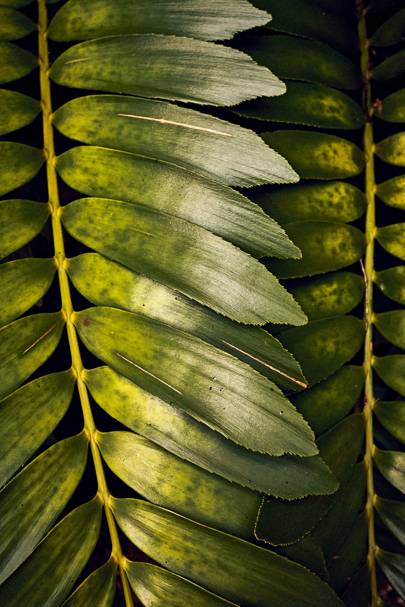
Palmera leaves
Oliver Pilcher
‘Nicoya is definitely Costa Rica’s beach hub and has the best weather, but the southern Osa Peninsula takes the prize for wildlife. It’s awesome, partly because of the Golfo Dulce, a tropical fjord that’s very deep at the centre. The landmass was carved out when Pangaea separated, and the biodiversity is incredible – species from the Amazon and even Madagascar can be seen here. It’s where our remaining jaguars and tapirs find shelter, beneath a canopy full of hummingbirds, trogons and toucans.
‘There are spots in Costa Rica that are still pretty much undiscovered: very few people have been to Cocos Island; it’s in the history books because of stories of treasure and pirates, but it’s also the site of an immense web of marine life as well as birds endemic to the isle. But I encourage tourists to spend time with the human species, too. Go to small towns such as Zarcero, Grecia and Atenas and you’ll experience the real culture. I’m not sure why – perhaps because we were never invaded, never were slaves to anyone else – but we are an open, supremely hospitable country. A place where people routinely live beyond a century. I put it down to the way we are with visitors and our neighbours – always ready to learn from others, and teach them, too.’
For information about booking a trip to Costa Rica, visit Last Frontiers and Journey Latin America
Keep scrolling for more images...
Read next
Like this? Now read:
Meet the nomadic families going off-grid
Meet the nomadic families going off-gridAdvertisement
10 sustainable destinations we'd love to visit in 2021
10 sustainable destinations we'd love to visit in 2021Related Posts
By accepting you will be accessing a service provided by a third-party external to https://oc3anclub.com/

